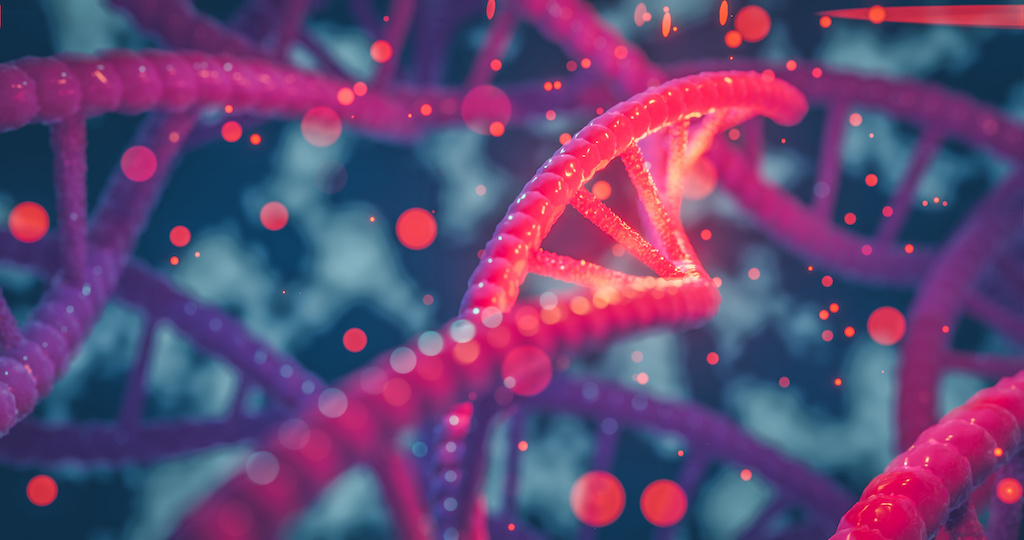
Last week, PPMD held a webinar to discuss the lessons learned in Gene Therapy, current challenges for our community, and what the future holds for these promising treatments.
After opening with an insightful presentation from Dr. Kanneboyina Nagaraju, we were joined by Dr. Perry Shieh for a fantastic Q&A session with both panelists. There were some great questions asked, but unfortunately we were not able to get to all of them during the live event. You can now view responses to the remaining questions in our FAQs below.
We encourage you to watch the webinar, where a number of important topics were discussed with our guest speakers, and read our FAQs to find some additional answers.
Watch the Recording
FAQs
What happens if someone is exposed to an AAV just from experience of daily life?
If someone has been exposed to a viral particle such as AAV (Adeno-Associated Virus), the body learns from that and builds antibodies to prevent re-infection. That is how individuals develop these pre-existing neutralizing antibodies. Those neutralizing antibodies could inhibit a successful delivery of a gene therapy by preventing the virus from delivering its content (promoter + transgene) to the muscle. That is why gene therapy trials in Duchenne require testing for these neutralizing antibodies before a person can receive the gene therapy.
Are there any risk of the COVID vaccines being used or in development impacting the an individual’s eligibility for gene therapy due to neutralizing antibodies?
You can read more about this topic in PPMD’s post about the J&J Vaccine. A key factor to note is J&J is using an adeno virus, whereas current gene therapies are using adeno-associated virus. While the names are similar, these are different viruses and the antigens (such as neutralizing antibodies) that recognize them are different. If a vaccine was approved that used adeno-associated virus, then families that wished to receive gene therapy would need to avoid that particular vaccine.
Some patients have a high titer for AAV already (meaning presence of neutralizing antibodies to the virus being used to delivery gene therapy), which makes them ineligible for trials. Are there any studies focused on these patients so they could receive gene therapy in the future?
Not at this time. However, as discussed in the webinar there are tools that are currently used in hospitals that could be adapted to Duchenne gene therapy trials to reduce neutralizing antibodies. Strategies such as plasmapheresis (to temporarily reduce the amount of neutralizing antibodies circulating in blood) or using pre-treatment immune suppressing drugs (to temporarily reduce the body’s ability to make neutralizing antibodies) are used in other conditions. It is important to note that we still have more to learn about utilizing these strategies in Duchenne. There is some pre-clinical work being conducted to look at existing tools, as well as novel tools, to address this issue.
Is there data looking at different immunogenicity (ability of a substance to cause an immune response) with the different AAV serotypes (AAV8, AAV9, AAVrh74)?
Because only a limited number of individuals with Duchenne have been treated with gene therapy and those trials have multiple differing variables (dose range, production, safety protocols, etc), we do not have sufficient data to determine if there is a significant difference in immunogenicity within Duchenne. We also are still trying to understand how common neutralizing antibodies are to the various AAV serotypes.
Since the AAV is used just as a ‘vehicle’ to deliver the transgene (such as micro-dystrophin in current clinical trials), are there plans to use a larger vehicle?
Many researchers and companies are investigating alternate delivery systems that could enable the delivery of larger transgenes. There is also significant research ongoing for delivery systems that don’t promote an immune response (or have a minimal response) to allow for any patient to receive gene therapy and enable re-dosing. We can’t say how soon these types of novel delivery systems will be ready for use in humans, but it is an area of great interest.
If you receive gene therapy using a specific AAV vector (serotypes such as AAV8, AAV9, AAVrh74) could you receive a second gene therapy in the future using a different AAV vector?
Individuals who receive gene therapy receive a high dose of AAV, and their bodies generally respond by making a significant amount of antibodies to protect against that virus in the future. Because the AAV vectors are all very similar, when the antibodies are at high levels there can be cross-reaction between the different vectors. For example, if a person receives gene therapy using AAV9, the antibodies made to the AAV9 could also react to AAV8 and AAVrh74. Consequently, gene therapy is considered a one-time treatment.
For individuals who have not received gene therapy, the presence of neutralizing antibodies for one serotype of AAV may not prevent them from receiving treatment using a different serotype. An individual would need to be screened for each trial in order to determine if they were eligible for gene therapy.
TODAY’S SUPPORT WILL LEAD TO TOMORROW’S POSSIBILITIES
Your Gift to support PPMD’s Gene Therapy Initiative will be Matched Dollar-for-Dollar up to $50,000, thanks to the generous support of the Small Heroes Foundation
Gene Therapy has the potential to be transformational, but there are obstacles we need to overcome to ensure that all individuals with Duchenne will have the option to receive these promising therapies. Through our investments in research, quality care initiatives and advocacy efforts, PPMD will work from every angle to overcome these hurdles.
Donate today to have your gift matched, and help us drive progress forward. Your gift will help turn obstacles into possibilities.
Donate >



 by: Parent Project Muscular Dystrophy
by: Parent Project Muscular Dystrophy


